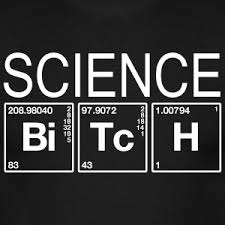As he nears the end of his historic reign as the most powerful man in the free world, the time will soon come when writers all over will try to define President Barack Obama’s legacy. There are many good and bad points to raise when it comes to Obama’s legacy. One element will surely be the first Black president’s commitment to reforming the corrupt system of mass incarceration practiced the United States of America, which disproportionately locks people of color up for years for nonviolent crimes. He expressed that he wished to see the US of A “make the system [which spends $80 billion per year locking people up] work smarter and work better.”
POTUS has flexed his muscles in a few ways, on prisoners’ behalf. In June, the Obama administration announced the Second Chance Pell Pilot Program, which will provide Pell grants for 12,000 prisoners who wish to take college courses offered by a pool of 67 colleges/universities. Furthermore, in August, the administration announced that the use of private prisons would be phased out (excluding those used Immigration and Customs Enforcement).
However, the Obama administration’s biggest impact on the federal prison population has been the record-shattering number of prisoners freed. Starting 2014, President Obama and the Department of Justice started working to identify prisoners locked up on nonviolent drug charges, had been in prison for at least a decade and would receive lower sentences today for under Obama’s Sentencing Commission’s reforms (i.e. reducing the disparity between possession of cocaine powder and crack).
On August 3, the presidential record for commutations in a single day was set when Obama freed 214 prisoners. By October 27, 872 prisoners were cleared to go home (688 freed this year). On top of that, last November, the Department of Justice released a staggering 6,600 low-level nonviolent drug offenders. These numbers exceed the 11 presidents that preceded President Obama COMBINED, and are expected to keep growing.
Though the new reforms are aimed at low-level offenders, President Obama has freed several men that the powers-that-be have dubbed kingpins. The following one-time Trap Gods will be home soon:

Turf: Oakland
Bid: Sentenced to 35 years in 1988 for manufacturing and possessing crack cocaine for sale.
Came Home: December 28
- Arrested at his Adams Point apartment with 30 pounds of crack and 16 pounds of powder worth an estimated $3 million. The night before he held his $30,000 birthday party with 3,000 guests at the Golden Gate Fields Turf Club.
- Mentor to Bay Area rap legends such as MC Hammer, Too $hort, E-40, Mistah FAB and Yukmouth
- Wrote a book titled Weight, which gives his side of his story.
Andre M. Huggins

Turf: Delaware
Bid: Sentenced to 20 years in 2005, as one of two of the biggest drug dealers arrested in Delaware in a decade.
Coming Home: February
Lived in a $300,000 home in Bear, DE, with an in-ground pool, big screen TV’s, furs in the closet, Jacuzzi and also four cars worth $132,000.
Cops never seized any drugs from him. He was busted due to phone conversations.
Dewayne L. Comer

Turf: Central New York
Bid: Sentenced to life in prison in 1997 for running a multi-million dollar crack ring.
Came Home: December 1
- At the time, life was the penalty for possessing 1.5 kilos of crack or more.
- He was ordered to forfeit his Benz, Ford minivan and Volkswagen, as well as $17,600 in cash.
Dawan “Swannie” Croskery
Turf: Buffalo, NY
Bid: Arrested in 2002 and sentenced to 20 years in 2004 for engaging in a continuing criminal enterprise (the “kingpin charge”).
Came Home: December 1
- Admitted to selling crack and powder, along with washing the money through copping cars in other people’s names.
Ralph Casas
Turf: Miami Beach
Bid: Sentenced to life in 2002 for smuggling 9,445 kilos of cocaine (over 10 tons) between 1992 and 1995.
Coming Home: Sentence reduced to 292 months (24 years)
- Used his status as an American Airlines baggage handler to slip cocaine (from Puerto Rico and several foreign nations) past Customs into Miami and New York.


